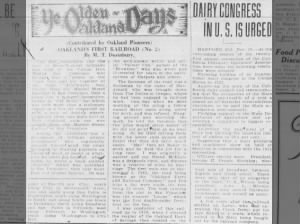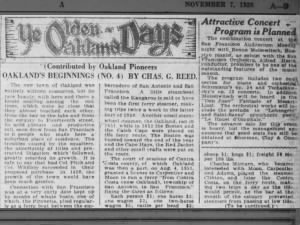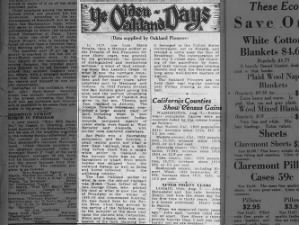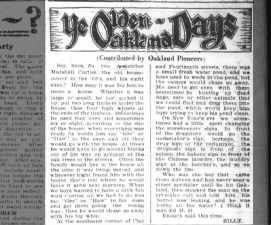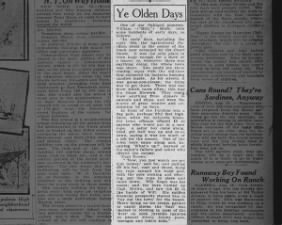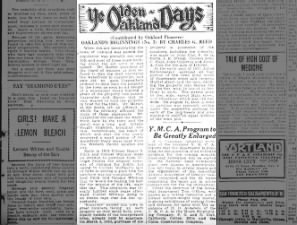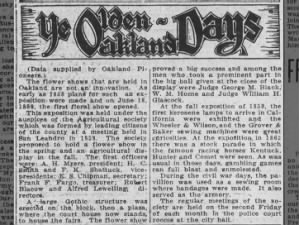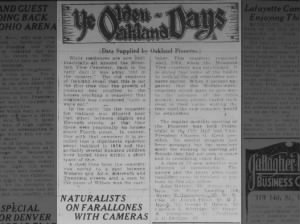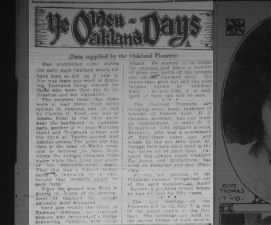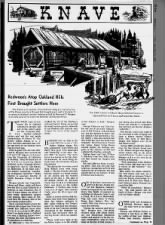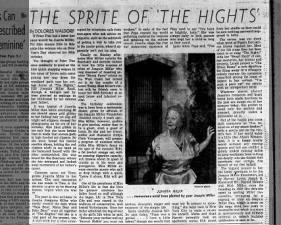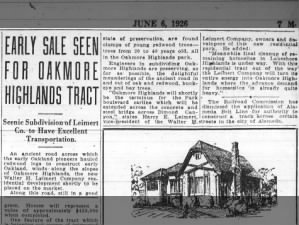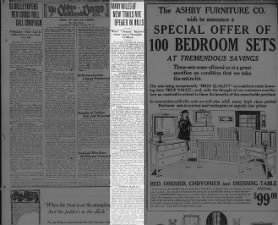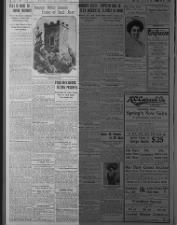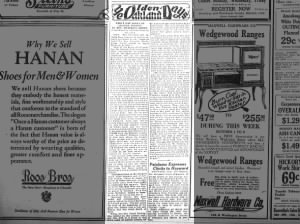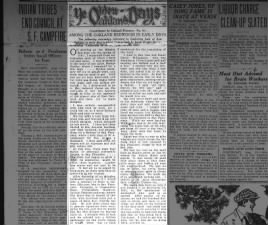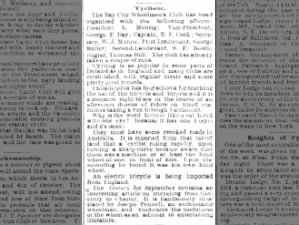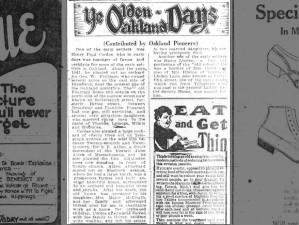 HENRY PAUL CORDES
Ye Olden Oakland Days
TO BLOG Sun, Oct 3, 1920 – Page 43 · Oakland Tribune (Oakland, California) · Newspapers.com
HENRY PAUL CORDES
Ye Olden Oakland Days
TO BLOG Sun, Oct 3, 1920 – Page 43 · Oakland Tribune (Oakland, California) · Newspapers.com
(Contributed by Oakland Pioneers)
One of the early settlers was Henry Paul Cordes, who in early days was manager of farms and orchards for some of the early settlers in Oakland. About the year 1861, he planted out an orchard for Geo. W. Fountain, who owned several acres on the east side of Broadway, near the present site of the Oakland postoffice. The old Fountain home still stands on the north side of the narrow street now known as Seventeenth street, formerly Birnie street, between Broadway and Franklin. Fountain had one son, still surviving, and several very attractive daughters, who married young men by the name of Thomas, Lemoge, Wilkie and Wetmore.
Cordes also planted a large orchard of cherry trees out on Telegraph avenue on the west side between Twenty-seventh and Twenty-ninth, for
S. E. Alden, a direct descendant of the historic John Alden of Massachusetts, and he also planted the fine old linden trees now standing in front of Trinity church. Alden afterward moved out on Shattuck avenue, where he had a large ranch, was a prosperous farmer and bult another beautiful home, surrounded by an orchard and beautiful trees and shrubs. After his death, the old home was occupied by his daughter, Mrs. Major McElrath, and her family and afterward turned over for use in charitable work as a home for orphaned children. Cordes afterwards moved with his family to Gilroy, became quite wealthy, and left his estate to two married daughters, his son having previously died.
Another one of the early settlers was Harry Linden, a fine gentleman of the "old school." He was a brother of Mrs. Beebe and also of Mrs. Hinton of Temescal. Linden Lane, now known as Forty-fifth street, one of the early roads which ran from Telegraph avenue east to the present Ladies' Relief Society Home, was named for him.
 OAKLAND EARLY DAYS (NO. 5) BY CHAS. G. REED
Ye Olden Oakland Days
TO BLOG Sun, Nov 28, 1920 – Page 12 · Oakland Tribune (Oakland, California) · Newspapers.com
OAKLAND EARLY DAYS (NO. 5) BY CHAS. G. REED
Ye Olden Oakland Days
TO BLOG Sun, Nov 28, 1920 – Page 12 · Oakland Tribune (Oakland, California) · Newspapers.com
